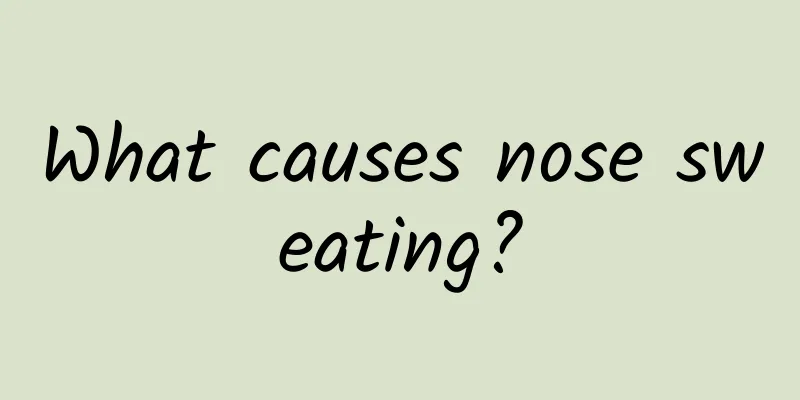Precautions after wound suture

|
In daily life, some people are injured for some reasons and have to undergo wound suture surgery. Clinically, simple wound suture does not carry much risk. As long as the patient takes good care of it and follows the doctor's advice, he or she will recover soon. However, it is a pity that some patients suffer from scarring and postoperative infection due to improper handling after suturing. Here are some things to note after suturing an injury. Precautions after wound suture 1. Keep the wound clean and dry, avoid water and bumps. Rinse your mouth frequently if you have wounds in your mouth. 2. Change the dressing on the second day after surgery. If there is no special situation and the exudate is not much, there is no need to wrap the gauze again. Just apply a thin layer of erythromycin eye ointment and still avoid getting it wet. 3. Stitches should be removed from facial wounds in 7 days, eyelid wounds in 6 days, and limb wounds in 10-12 days. You can get wet one day after the stitches are removed. 4. Regarding diet: avoid spicy and irritating foods, do not eat or eat as little seafood as possible, and persist in doing so for at least two weeks; if there are wounds in the mouth, avoid eating too hot or high-residue foods within two days after the operation. Dark foods such as soy sauce have nothing to do with wound pigmentation, so there is no need to avoid soy sauce. 5. Patients referred from other hospitals usually have various liquid dressings or growth factor drugs prescribed by other hospitals. Most of them can be used or not. If they need to be used, I will ask you to use them after the stitches are done. 6. Tetanus shot: The chance of tetanus infection is low, but the consequences of infection are serious and life-threatening. Tetanus vaccine (skin test required) or tetanus immunoglobulin (skin test not required) needs to be injected within 24 hours after injury. Our hospital is out of stock of these drugs for a long time, so please get the injection at another hospital. Preschool children who have received the diphtheria, pertussis and tetanus vaccine do not need to be vaccinated if the wound is relatively superficial. Dietary considerations Pay attention to food hygiene, do not eat raw, cold, hard or spoiled food, and avoid alcohol and spicy condiments. Do not drink strong tea, strong coffee or other stimulating beverages. The diet should be regular, nutritious, and rich in vitamins A, B, and C. Eat foods that promote wound healing, such as: 1. Zinc: Zinc can combine with vitamin C to participate in the synthesis of collagen in the body, increase resistance and promote wound healing. Foods containing zinc include corn, soybeans, radishes, mushrooms, nuts, animal liver, fungus, kelp, seafood, eggs, meat, whole grains, and nuts. 2. Vitamin E: Vitamin E can maintain animal reproductive function and promote wound healing; when vitamin E and vitamin C are used together, the two will complement each other and enhance their effects. Foods containing vitamin E include cereals, green leafy vegetables, egg yolks, nuts, meat and dairy products. 3. Glucose: Sugar is the main energy supplier for the human body, and supplying sufficient energy is essential for wound healing. During the wound healing period, you can eat more fruits rich in sugar, which can not only increase the sugar content but also provide sufficient vitamins. 4. Protein: Protein can promote wound healing and reduce the chance of infection. Foods rich in protein include various lean meats, milk, eggs, etc. 5. Vitamin A: can promote wound healing. It is mainly found in foods such as carrots and tomatoes. 6. Vitamin C: can promote wound healing. It exists in various vegetables and fruits, mainly green vegetables, spinach, oranges, red dates, kiwis, citrus and grapefruits. Foods that are not conducive to wound healing: fermented bean curd, onions, peppers, leeks, etc., because they can easily cause infection and are not conducive to wound healing. If you have any of the following conditions, please return to the hospital immediately for further examination and treatment: (1) Fever and chills (2) The wound becomes red, swollen, hot and painful (3) Pus oozing from the wound (4) Whether the stitches can be removed depends on the doctor’s instructions. Please go to the surgical clinic for follow-up. ◎ If the wound is red, swollen, hot, painful, has abnormal secretions, bleeding, or sutures are torn, seek medical treatment as soon as possible. ◎ For wounds at joints, activities should be minimized to avoid pulling on the stitches. |
<<: How to treat ear eczema in children
Recommend
Can dysmenorrhea be relieved after having sex?
Generally speaking, unmarried women may have cert...
Meditation for health, here the most professional experts will tell you!
Many people meditate, but most don’t know how to ...
What should I do if my child keeps coughing?
Recurring coughs will not only greatly affect a p...
What is obsessive compulsive disorder and what are its symptoms
In today's fiercely competitive society, many...
What are the effects of red dates and hawthorn water?
Hawthorn and red dates not only have edible value...
If your child is coughing and vomiting, choose three dietary treatments
Parents are often most worried when their childre...
Who should not eat South African leaves?
South African leaves can be used as food as well ...
What are the symptoms of lumbar spondylosis? Signs of lumbar spondylosis
Some white-collar workers who sit in front of com...
The efficacy of mulberry and ginger cold tablets
Sangjiang cold tablets are a kind of traditional ...
What to do if you have gastric bleeding
Gastric bleeding is caused by many reasons, and t...
What are the signs of numbness in hands and mouth?
Numbness in the hands and mouth is a very common ...
What are the dangers of severe thrush?
If thrush is more serious, the harm is still rela...
Air conditioning brings you comfort, but it can also cause you these diseases!
In this kind of weather, anyone who dares to go o...
What should I pay attention to when I have eczema?
The causes of eczema are very complicated, becaus...
Calcification in the prostate
Prostate diseases are not unfamiliar to middle-ag...









